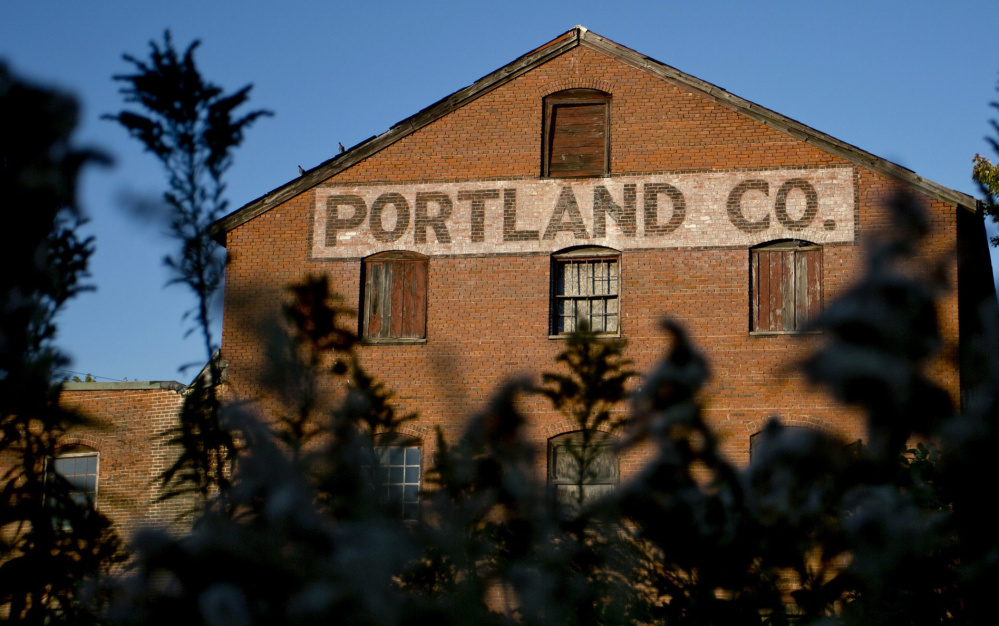Portland voters may want to set aside some extra time and maybe even bring a magnifying glass when they go to the polls on Nov. 3.
Question 2, which seeks to establish a scenic overlay zone over 58 Fore St. and other areas of the city and requires developers to submit site plans when seeking a zone change, is printed in its entirety on the ballot. It’s in small print and takes up a page and a half of the city’s eight-page ballot.
The decision to print the entire ordinance on the ballot was made by the City Council, because members felt the question and the summary contained language designed to persuade voters to support it. The council couldn’t legally amend that language, so the entire ordinance was published.
Being a zoning ordinance, it contains some dense terminology, as well land deed language – including latitude and longitude – of the first Scenic Overlay Protection Zone at the former Portland Co. complex at 58 Fore St.
Here are some key passages that may help voters understand the controversial ballot issue:
The ordinance “establishes the Scenic Viewpoint Protection Zone, an overlay zone to be used for specific situations.” Such a zone would protect views of scenic areas and resources.
Scenic areas are “natural landscapes with visual qualities that are significant to the residents of a community by setting it apart from other places, enhancing recreation and relaxation, contributing significantly to the quality of life, adding to the value of property, and enhancing the desirability and livability of the community.”
Scenic resources “include, but are not limited to, (1) property on or eligible for inclusion in the National Register of Historic Places … (2) national, state or local parks (3) public natural resources or public lands visited by the general public or viewed by the general public from a public place, in part for the use, observation, enjoyment, and appreciation of natural or cultural visual qualities, including but not limited to the Fore River, Casco Bay, the Atlantic Ocean, mountains, and great ponds.”
Designation as a scenic protection zone means:
• “All new buildings and structures shall be designed to avoid occupying, intruding into, or obstructing public views of the scenic resource from any designated public viewing spot or area in or immediately adjacent to the overlay district.”
• “No part of a sign, tower, rooftop equipment, elevator, other rooftop appurtenance, fence, or landscaping shall be permitted to occupy, intrude into or obstruct public views.”
• “Outdoor lighting shall be designed so as to minimize light pollution that interferes with the visibility of the night sky, to minimize light intrusion into adjacent neighborhoods, and to not unnecessarily intrude into the public view of the scenic resource, while providing necessary lighting for safety of pedestrians and vehicular traffic.”
• “Any proposed landscaping, including but not limited to walls, fences, hedges, grading, and plantings, shall be designed so as to avoid occupying, intruding into, or obstructing public views of the scenic resource … (and) shall include an enforceable maintenance plan to keep vegetation from growing to negatively impact public views, and shall include a maintenance agreement … giving the city the right, but not an obligation, to enter onto the site to trim vegetation, remove obstructions, and otherwise keep the view unobstructed.”
New scenic protection zones “may be initiated by (a newly created) Scenic Viewpoint Task Force, by request of 20 members of the general public, or by the owner of an affected property.” (There is no definition of an affected property owner in the ordinance.)
The City Council must approve new zones or zoning changes, with advice from the Planning Board.
A 13-member scenic view task force would be appointed by the mayor within 60 days of enactment. It would be composed of eight members of the public at-large, including one person from each of the five council districts, as well as a city councilor, Planning Board member, Historic Preservation Board member and a representative from the Portland Development Corp. Among other things, the task force would create an inventory of “significant scenic areas and viewpoints.”
If the ordinance passes, the city cannot weaken or repeal it without the approval of voters.
Copy the Story Link
Send questions/comments to the editors.




Success. Please wait for the page to reload. If the page does not reload within 5 seconds, please refresh the page.
Enter your email and password to access comments.
Hi, to comment on stories you must . This profile is in addition to your subscription and website login.
Already have a commenting profile? .
Invalid username/password.
Please check your email to confirm and complete your registration.
Only subscribers are eligible to post comments. Please subscribe or login first for digital access. Here’s why.
Use the form below to reset your password. When you've submitted your account email, we will send an email with a reset code.